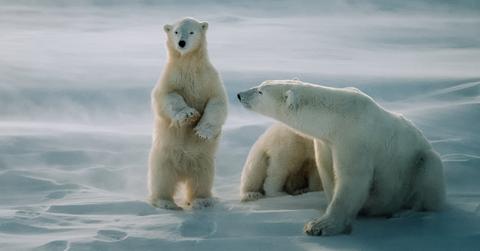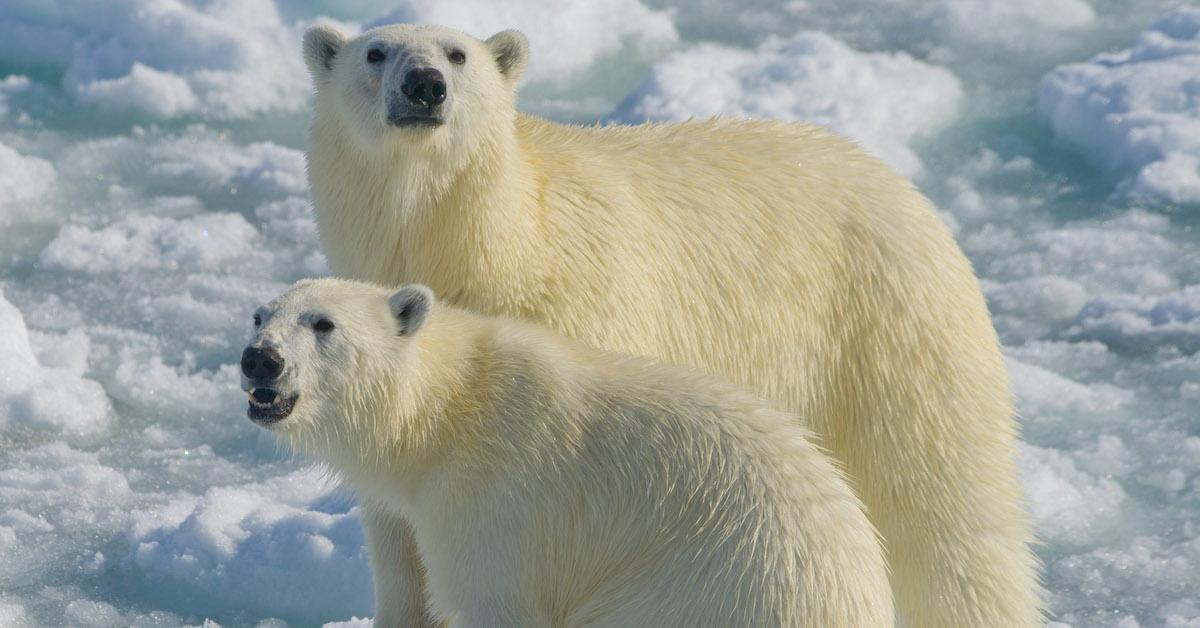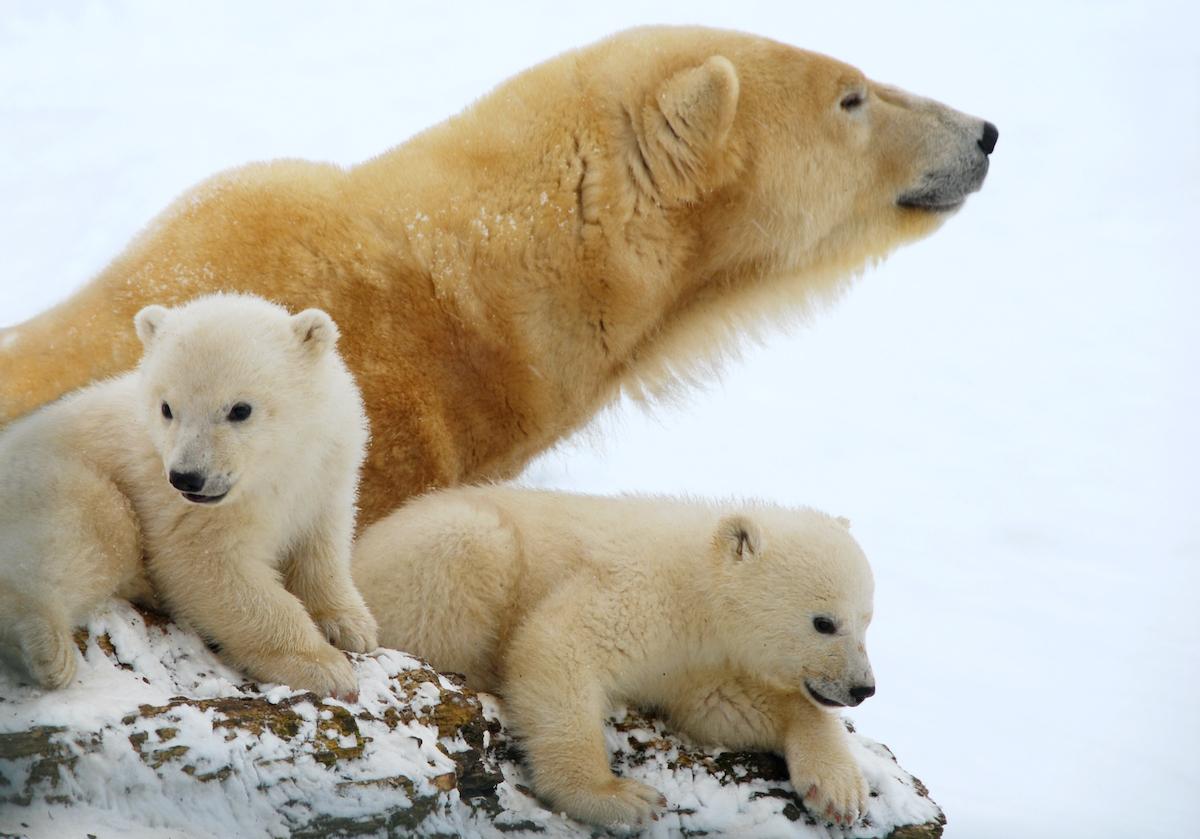Polar Bears Cubs and Mothers Are Suffering As Fossil Fuel Companies Drill Near Dens
Fossil fuel exploration is hurting polar bears and mother cubs by putting their dens at risk.
Updated July 8 2020, 10:44 a.m. ET

Environmental activists have used polar bears on melting ice caps as symbols of the climate crisis for years. But a new study shows that the global temperature rise and the subsequent melting of ice caps are far from the only thing hurting polar bears.
According to the study, the oil industry is one of the most significant anthropogenic disturbances harming polar bear mothers and cubs on Alaskan shores.
The study, published this week in the University of Calgary’s journal ARCTIC, looks at polar bear mothers and cubs along the central coast of Alaska’s North Slope, in the southern Beaufort Sea. Due to increased rates of melting sea ice over the past four decades, the researchers have observed pregnant, laboring polar bear mamas building their denning habitats on coastal land more and more often — which is where various anthropogenic stressors occur.

But first, some background info on polar bears and denning is necessary. As explained by Polar Bears International, when a pregnant polar bear is preparing to give birth, she builds herself a small maternity den out of snow, allowing snow to fall and naturally seal the den.
She gives birth to her babies there (generally one to three cubs at a time, though twins are most common), and she and her babies remain in the small den together for four to eight months. During that time, the cubs (who are blind at birth) nurse from their mother, who doesn’t eat, drink, or leave the den — her sole responsibility is to nourish her little ones and keep them warm and safe, according to Polar Bears International. Come spring, the families emerge.
But with temperatures continuing to rise, more sea ice is melting, meaning polar bear moms are more likely to build their dens on land, near various human activity hotspots — namely, spots with fossil fuel exploration, extraction, and production, as well as aircrafts flying overhead. As explained by Earther, who was able to access the full study, mother polar bears remain steadfast in their dedication to their dens; even with interferences such as those listed above, a mere 8 percent of polar bears observed in the area abandoned their dens after experiencing a disturbance.

Because of mother polar bears’ deep attachment to their dens, they are in danger of being killed by equipment, being buried deeply by snow, or being harmed by vibrations from fossil fuel machinery.
“We found that most polar bear mothers will stay in their dens rather than fleeing when a disturbance is nearby, meaning that machinery could drive over dens and possibly kill the bears inside,” lead author Wesley Larson of Brigham Young University told Earther in a statement.
"That puts them in direct conflict with people who are using the land, whether it's the oil industry or other people on land," Larson continued in a statement shared by InsideClimate News. "So we're seeing a higher level of conflict."
Even though the U.S. Fish and Wildlife Service has laws requiring human activity to be at least a mile away from known polar bear dens, there is quite a large margin of error within that mandate, according to Earther.
As noted by the news outlet via a PLOS One study, the central tool used to identify polar bear dens only works less than 50 percent of the time — but human intrusions on denning polar bears could be reduced by 90 percent if the people responsible for these disturbances made a few changes, according to a Fish and Wildlife Service study, via InsideClimate News.
Not to mention, the Trump administration, which continually weakens environmental standards around the U.S., wants to make it legal to drill for oil in various coastal areas where polar bears live. This would only be detrimental to polar bear populations.
The solution to this issue is simple, according to Geoff York of Polar Bears International. "Give bears that one place where they can den in peace and safety," he told InsideClimate News, "especially at a time when their habitat is changing dramatically."
Essentially, if we want to protect polar bears, fossil fuel companies and other businesses should be required to stay far, far away from polar bear denning areas.